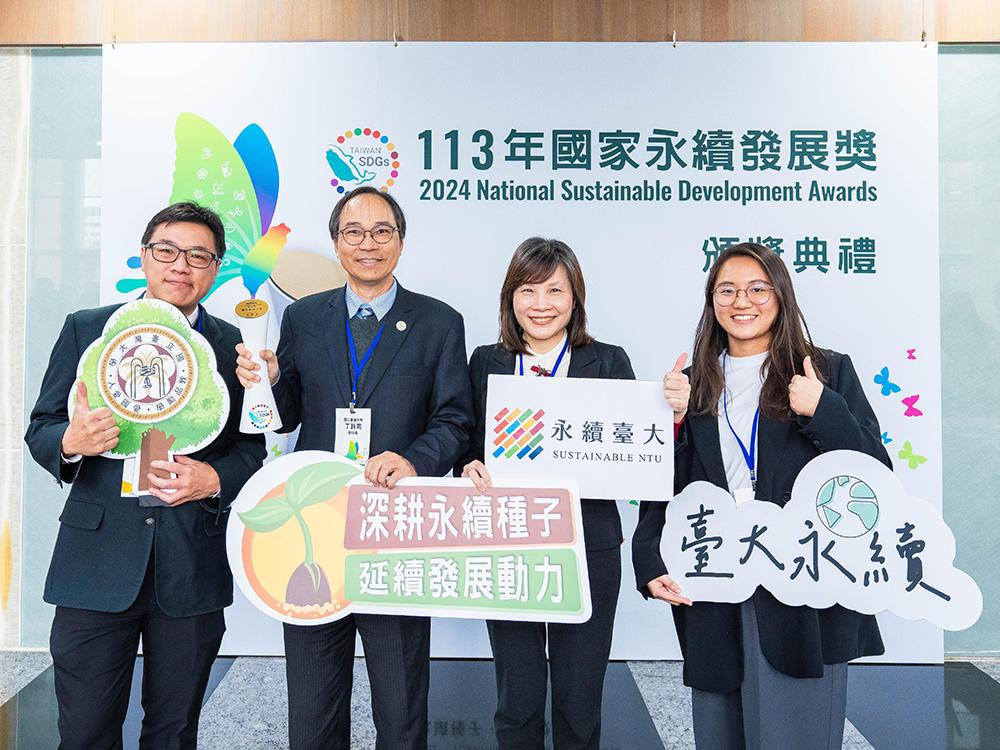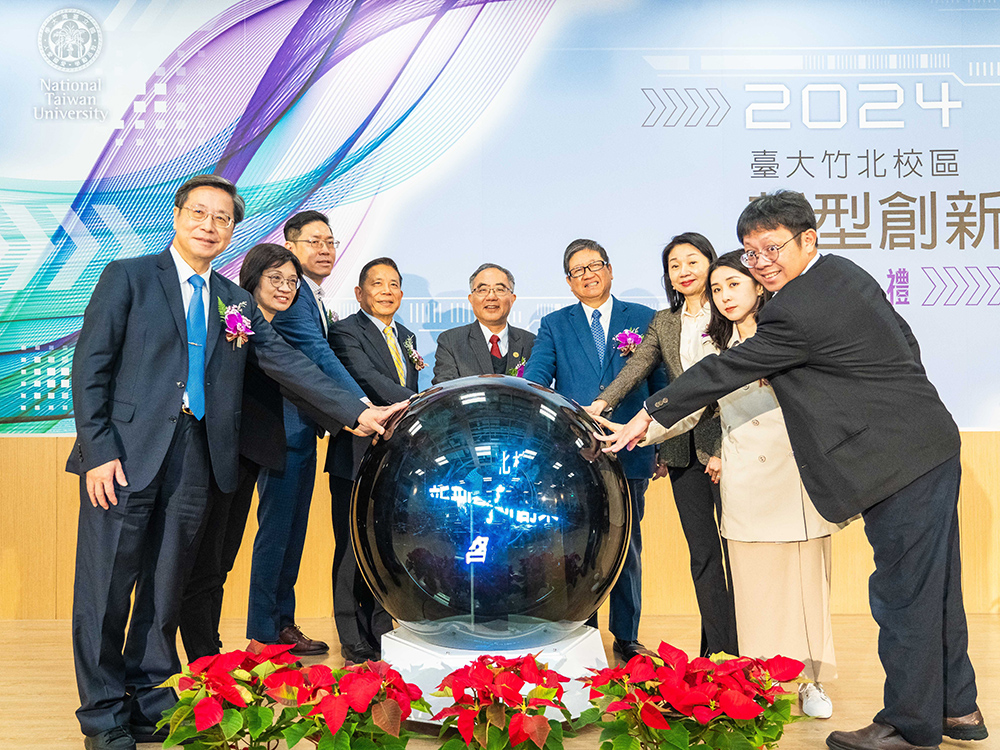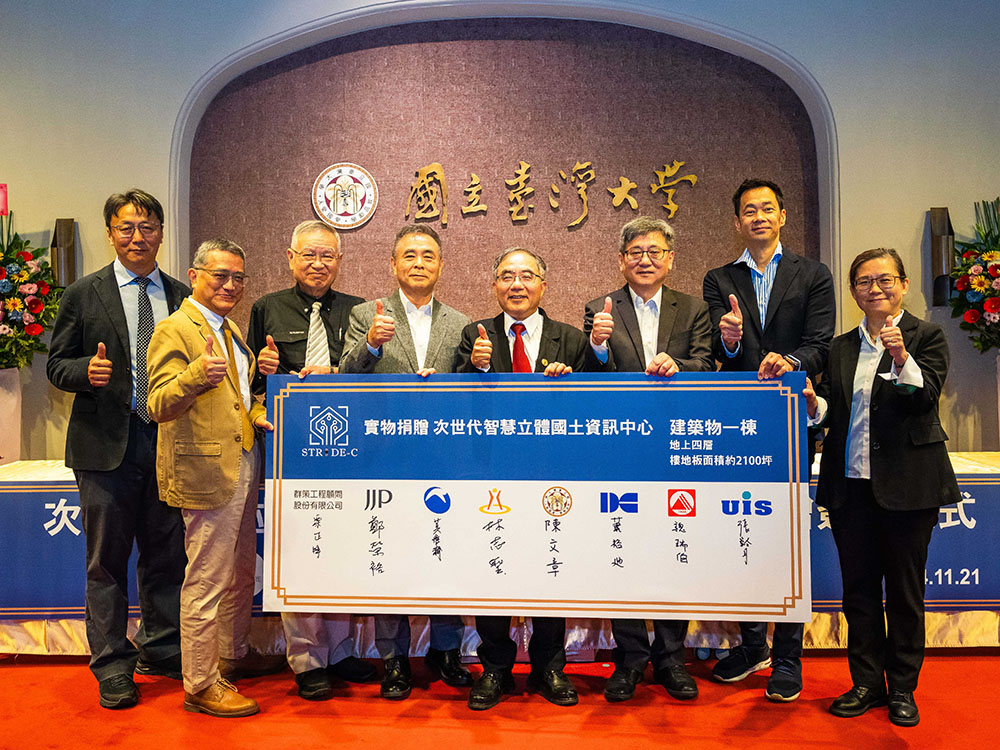
NTU wins the 2024 “National Sustainable Development Awards” for exerting influence in higher education
瀏覽器版本過舊,或未開啟 javascript
請更新瀏覽器或啟用 javascript
Spotlights
Dr. Juan Gil delivers a lecture at NTU.
Group photo of the speaker and audience.
In March 2019, the Ministry of Science and Technology (MOST) launched the “Nusantara – Southward Chinese and Cultural Translation” project, inviting a total of 11 experts and scholars to tour colleges and universities in Taiwan and give talks on the political economy and cultural topics of Southeast Asian countries. As one of the Nusantara scholars, Dr. Juan Gil Fernández, a member of the Spanish Royal Academy, was invited jointly by National Tsing Hua University, NTU, National Cheng Kung University, and National Chi Nan University to give four lectures on the title, “Los Chinos en Manila y Dictionario Hispanico Sinicum” (The Chinese in Manila and the Spanish-Chinese Dictionary).
The third lecture was held at NTU Library on November 21, hosted by Prof. Luisa Shu-Ying Chang (張淑英) of NTU’s Department of Foreign Languages and Literatures. The event was graced by such distinguished guests as Mr. Victorino Mapa Manalo, Executive Director of the National Archives of the Philippines, and Prof. Regalado Trota José, Archivist of the University of Santo Tomas in Manila, the Philippines. Other attendees included scholars from Academia Sinica, international doctoral students, and students in Spanish classes at NTU and other universities. The auditorium was filled to capacity with eager audience.
Dr. Juan Gil began the lecture by introducing the exchanges between the Spanish and the Chinese in Manila, the socioeconomic status and role of local Chinese, and Chinese-Spanish clashes during Spanish colonization in the 16th century. Manila was the hub of trade between the East and the West, and a multitude of Chinese merchants flooded to the city, sojourned there, and formed the first Chinatown in history, or the “Parián” – a settlement built especially for Chinese traders. During the period, Chinese in Manila were referred to as the “Sangley” (a term derived from Hokkien Chinese, meaning “business”). They sold daily necessities and craftsmanship to earn “reales” (i.e., “the Spanish dollar”) from the Spaniards. As diligent workers and shrewd traders, the Chinese migrants soon dominated local economy, which upset the Spanish colonizers in Manila. Unlike mestizos (i.e., “people of mixed blood”), who were more willing to accept Catholic doctrines or immerse in local communities, the Sangleys easily fell prey to political corruption or business disputes. As a result, the Chinese traders organized four armed revolts and were even expelled by the colonial government three times. Dr. Juan Gil underscored the ambivalent relationship between the Spanish colonizers and the Chinese in Manila. Although the Chinese provided daily necessities that set the foundation for Spanish colonization, they were regarded as a major hindrance and threat to the Spanish colony.
The second part of the lecture focused on Dictionario Hispanico Sinicum (Spanish-Chinese Dictionary). The original manuscript of the dictionary is currently preserved in the Archives of the University of Santo Tomas in the Philippines. This dictionary covers over 20,000 Spanish and Chinese terms, offering Spanish definitions and descriptions, Chinese characters, Hokkien Chinese pronunciations, and mandarin Chinese pronunciations. According to Dr. Juan Gil, the dictionary was supposedly compiled by monks of the Dominican Order, as Latin expressions were found in the content. Nevertheless, most of the terms in the dictionary are for daily usage rather than for Catholic occasions. It is thus assumed that the dictionary was not compiled for missionary purposes.
Dr. Juan Gil also mentioned that while some Chinese terms in the dictionary are directly translated into Spanish, some traditional Chinese festivals are explained using Catholic doctrines and teachings. When there were not equivalents for an animal or plant species in either Chinese or Spanish, the term would be left without translation. The manuscript also contains temporal clues closely related to Taiwan. The definition of the entry “鷄籠 淡水” (Keelung and Tamsui, two places in Northern Taiwan) reads, “Tierra de Isla Hermosa ado estan los españoles,” meaning the land of the Spaniards on the Island of Formosa (former name of Taiwan). This entry shows that Dictionario Hispanico Sinicum was compiled when the Spaniards occupied Northern Taiwan from 1626-1642, and that the dictionary testifies to interactions between the Spaniards and the Chinese people in the Philippines during the Age of Exploration.
This lecture was delivered in Spanish with Chinese slides and Chinese/English handouts. During the Q&A session, scholars and students from different countries raised questions in Spanish or Chinese, filling the auditorium with the spirit and ambience characteristic of the Age of Exploration. Finally, the host of the lecture, Prof. Luisa Shu-Ying Chang, congratulated Dr. Juan Gil on his upcoming 80th birthday and thanked him for delivering a lecture and offering much food for thought at NTU. Meanwhile, she also appreciated the participation of scholars from the Philippines, as well as faculty members and students of different research fields.

NTU wins the 2024 “National Sustainable Development Awards” for exerting influence in higher education

Prof. Chih-Kung Lee of NTU’s Institute of Applied Mechanics elected NAI Fellow

NTU Launches Startup Initiatives at Zhubei Campus

2024 NTU-KU-UHH Trilateral Symposium: Uniting for Sustainable Future and Next Generation

Signing Ceremony for the donation of “Next-Generation Smart 3D Geospatial Information Center” at NTU Zhubei Campus
Current Spotlights